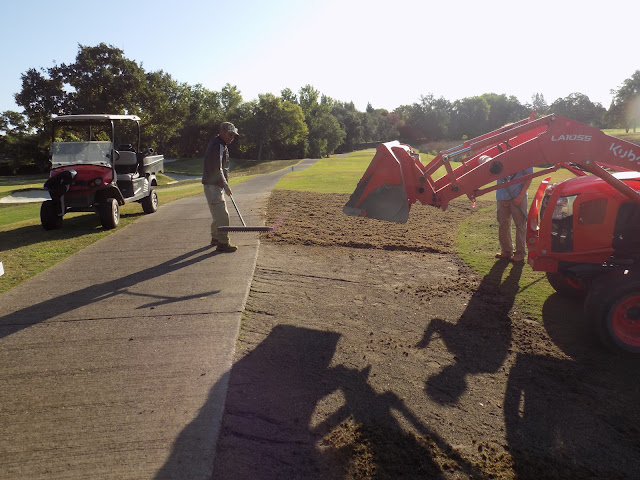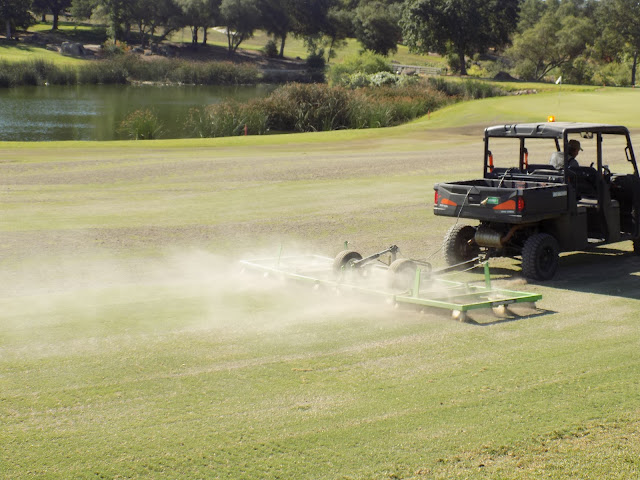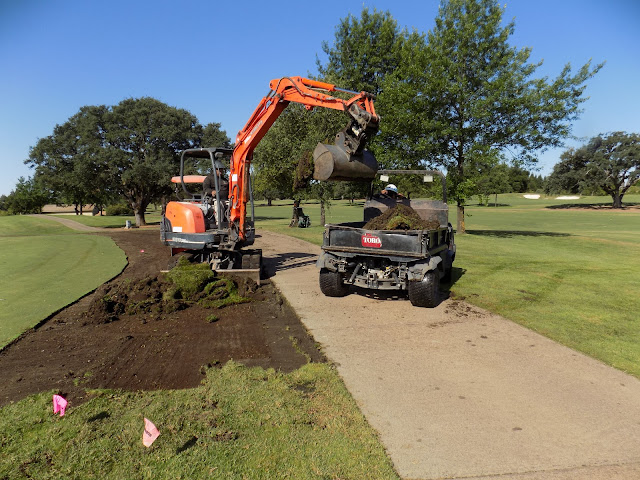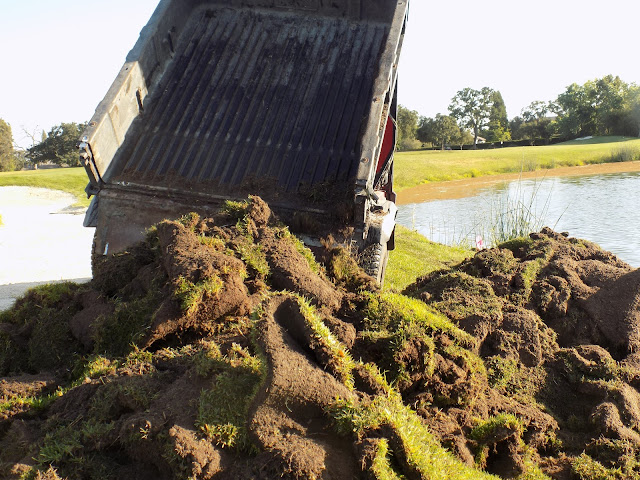Much has been happening since we last updated the Granite Bay Course Update in September from overseeding progress, tee leveling and the implementation of some new software for daily putting surface pin locations.
We have been using a daily pin location software program called EZ Locator for the past few months and after working out all of the GBGC customization, we are now officially rolling out it's implementation to members.
EZ Locator ......
- Saves on Course Set-Up Labor
- Eliminates Placement Errors and Guesswork
- Isolates Areas for Agronomy Purposes
- Adapts Hole Locations for Wet / Dry Weather Conditions
- Allows for Review of Historical Hole Locations
- Adapts for Tournament Play & Protected Hole Locations
- Creates 7 Days of Hole Locations in Under 5 Minutes
- Daily Hole Locations Can Be Accessed with Daily Printed Pin Sheets or Through the EZ Locator Mobile App.
Now that we have made all of the Granite Bay adjustments to the program, we feel comfortable in officially rolling it out to members and will start using
Yellow Only Flags on Friday 10/17/25. Members can pick up daily pin sheets from the Golf Shop or scan the QR code below and download the EZ Locator Mobile App and see precisely where the pin locations are for the day. Additionally any other Golf Courses that use EZ Locator that you visit will have a QR code available allowing the same access to pin locations there. There are hundreds of courses nation wide that utilize EZ Locator. Locally Del Paso uses the software.
 |
| GBGC QR Code for EZ Locator |
Tee and Shady Surround Overseeding
In our last Course Update in September we chronicled the annual overseeding all of our Hybrid Bermuda tee tops and selected shady green surrounds on #1, #2, #3, #6, #10, #13, #14, #15 & #18. These areas need overseeding for winter activity and in the case of the green surrounds the shady conditions that hybrid bermuda doesn't perform well in. Below are some pictures of the overseeded surfaces.
 |
Above is the Cobble Tee Level on #2 only 3 weeks removed from overseeding. The rapid growth of the cool season perennial ryegrass growing in the decelerating growth of the warm season hybrid bermuda will be the grass that you play golf off of all winter into the spring. As the hybrid bermuda starts to grow at that time then rapidly take off in the summer, the ryegrass will be overcome until fall when the bermuda slows down and we start the whole process over again. |
 |
This is the shady surround of #2 green. We overseed these areas like the tees because hybrid bermuda does not do well in the shade, particularly winter shade when hybrid bermuda slows down. The same dynamic of the overseeded tees applies to the overseeded shady surrounds. Ryegrass will dominate until the hybrid bermuda overcomes it in the summer, then we will start the process over again in the fall. |
#13 Tee Leveling
In 2021 when we renovated the golf course all of our tees were leveled and re-grassed with Santa Anna Hybrid Bermuda. There was a tremendous amount of construction in the #13 tee area if you recall prior to shaping the new tee levels. Unfortunately these tees were grassed later in the renovation process and because of the amount of rock demolition and fill that occurred in the area, we had some settling that has required leveling of the Club Tee Levels. Below are pictures of the process that will tell the story of this leveling.
 |
This is a picture from April 2009 during the re-grassing of the Granite Tees. In the background you can see the then location of the Club Tee Level and the large rock formation that inhabited the area. |
 |
Fast forward to 2021 during the renovation and the removal of these rocks. The rock formation is approximately where the Club Tee Level resides today. All of the broken granite boulders were moved to build the rock wall in front of #3 green. |
 |
Here is Enrique Reyes Huerta, tee leveler extraordinaire checking grades after stripping all of the sod off the tee and it's surrounds. |
 |
After hauling in sand and soil into the area, Enrique is now using a box grader to start the fine grade leveling process. |
 |
After getting the grade right, here we are replacing the sod. The short grass that had already been overseeded was laid back onto the leveled surface and afterwards the taller surround turf will be installed around the tee-top. |
 |
The truly finished product will be the tee you play golf off of in a few weeks after the sod has rooted down. Above represents our current finished product after leveling & re-sodding.
The stripping, dirt hauling, leveling, and re-sodding of the Club and Cobble levels of #13 required over 100 man-hours of labor, moving close to 50 yards of soil and sand in what will be a 3 day period when we are finished. |
Thank You for Your Support


































.jpg)



























